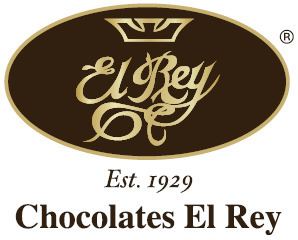Type of business Private | Website [1] Founded 1929 | |
 | ||
Area served Argentina, Aruba, Australia, Austria, Belgium, Canada, Chile, Colombia, Curaçao, England, France, Germany, Italy, Japan, Portugal, Spain, U.S.A, Venezuela Key people Jorge Redmond S. (President/CEO)Carlos Solís (Export Manager)Rand Turner (President C.E.R inc U.S.A)Keita Suzuki (President C.E.R Japan) Founders Carmelo Tuozzo, Jose Rafael Zozaya Profiles | ||
Chocolates el rey espa ol
Chocolates El Rey is a Venezuelan chocolate manufacturer. The company uses only premium-grade, locally grown raw material in the formulation of all its products. El Rey’s family-run business is one of oldest chocolate manufacturers in Venezuela.
Contents
- Chocolates el rey espa ol
- Chocolates el rey english
- Fair cacao exchange
- History
- Types of Venezuelan cacao
- References
Chocolates el rey english
Fair cacao exchange
El Rey offers consumers gourmet chocolate made from fairly traded cacao beans direct from small and large-scale growers in Venezuela. El Rey has managed to eliminate all kinds of middlemen, otherwise known as “coyotes”, who pay lowest possible price to growers by establishing Aprocao a democratically run cooperative that pays above market price for its cacao beans. Their trading partners are small growers and large who deal directly with Aprocao without intermediaries. Through Aprocao El Rey teaches growers how to manage the soil in a sustainable agricultural system promoting natural cycles without chemical pesticides or fertilizers and how to ferment each cacao harvest to earn the best price.
History
1973 - The Zozaya family and the Redmond family become partners. The company changes from a family enterprise to a stock market listed company, which now has a new name: Chocolates El Rey, C.A., the same brand as the products processed in the factory.
1974 - First transformation of the company. This occurs when the processing technology is improved and the exportation of cacao derivatives (cacao liquor, cacao butter and cacao powder) increases.
1975 - The Venezuelan government monopolizes the marketing of cacao in Venezuela in detriment of the generations of Venezuelans that made history by placing Venezuelan cacao in the world markets.
1979 - The construction of a new factory begins in Cumaná, Sucre state, with the intention of transferring all the operations there. At that time, the city of Cumaná accounted for 60% of the national production.
1980 - The government changes the rules of the game in so far as cacao prices are concerned by favoring the export of the cacao grain. The company is forced to abandon its exporting efforts and to focus exclusively on the domestic market.
1989 - After a stable but limited growth period, Chocolates El Rey, C.A. quickly reacts to a new government initiative: to lead the country along the path of a market economy. A second transformation in foreign trade takes place in the country; this time, it is based on the comparative advantages of Venezuelan cacao in an effort to become competitive within a regional and world economic integration scheme.
1995 - Inauguration of the new factory in Barquisimeto, Lara state, where all the industrial operations are now integrated. A new international stage of the company begins with the first exports to the United States.
1997 - Mass consumption products are inaugurated and exports are made to Colombia, Surinam, Trinidad and Tobago, Curaçao and Aruba.
1998 - Chocolate exports are made to Japan.
1999 - The Venezuelan mass consumption market is explored with a new line of confectionery.
2001 - Chocolates El Rey, C.A. is awarded the ISO-9002 certification (given by Fondonorma) thereby ratifying the company's high quality standards in accordance with the requirements of the Venezuelan COVENIN ISO Standard.
